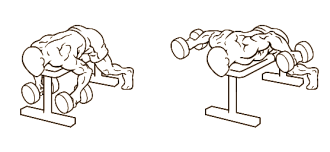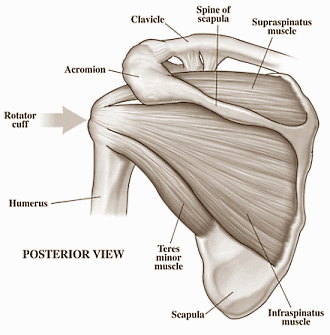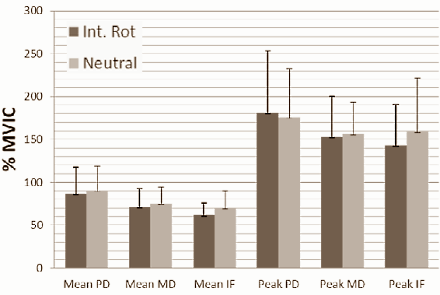|
The best way to perform the reverse fly
Bodybuilders or other serious strength athletes that have the reverse fly in their training schedule are best off performing it with a neutral grip, with your hand palms facing each other at the start of the concentric movement. Brad Schoenfeld of Lehman College in New York made a study of this, and the results have been published in the Journal of Strength and Conditioning Research.
Reverse fly
The reverse fly trains the muscles around the back of the shoulder blade. Whether you do the exercise on a machine [see above] or with dumbbells on a bench [see below], the reverse fly trains the back delts [officially known as the posterior deltoideus] and the rotator cuff muscles: the subscapalaris, infraspinatus, the supraspinatus and the teres minor. The last three muscles are shown below.



It's possible to perform the reverse fly using a neutral or a pronated grip. The figure above shows the difference between these two hand positions. To perform the reverse fly with a neutral grip, the palms of your hands face each other at the start of a concentric movement. To do the exercise with a pronated grip, the palms of your hands face downwards, towards your feet.
Study
The researchers at Lehman College wanted to know which grip helps the reverse fly to best stimulate the muscles at the back of the shoulder joint. They attached electrodes to the relevant muscles of the subjects and then got them to perform the reverse fly on a machine.
The electrodes enabled the researchers to see how hard the shoulder muscles had to work. PD = posterior delt; MD = middle delt; IF = infraspinatus. Int. Rot. = hands in prone position.

Conclusion
The differences are so subtle that for recreational athletes it makes no difference how they perform the reverse fly, the researchers conclude. They make an exception for people who are doing the exercise for remedial purposes, to strengthen the infraspinatus after an injury. For this group it is probably better to perform the exercise with a neutral grip.
For serious athletes, however, the researchers believe that the differences they measured are probably interesting. "Among the athletic or competitive population, however, this small difference may in fact be of value and these individuals therefore may be best served by using a neutral hand position."
Source:
J Strength Cond Res. 2013 Jan 8. [Epub ahead of print].
More:
Best shoulder-press: standing and with dumbbells 01.12.2012
Proof: plank is better for your core than crunches 11.08.2012
Fancy footwork gives calves a better workout 24.11.2012
|





